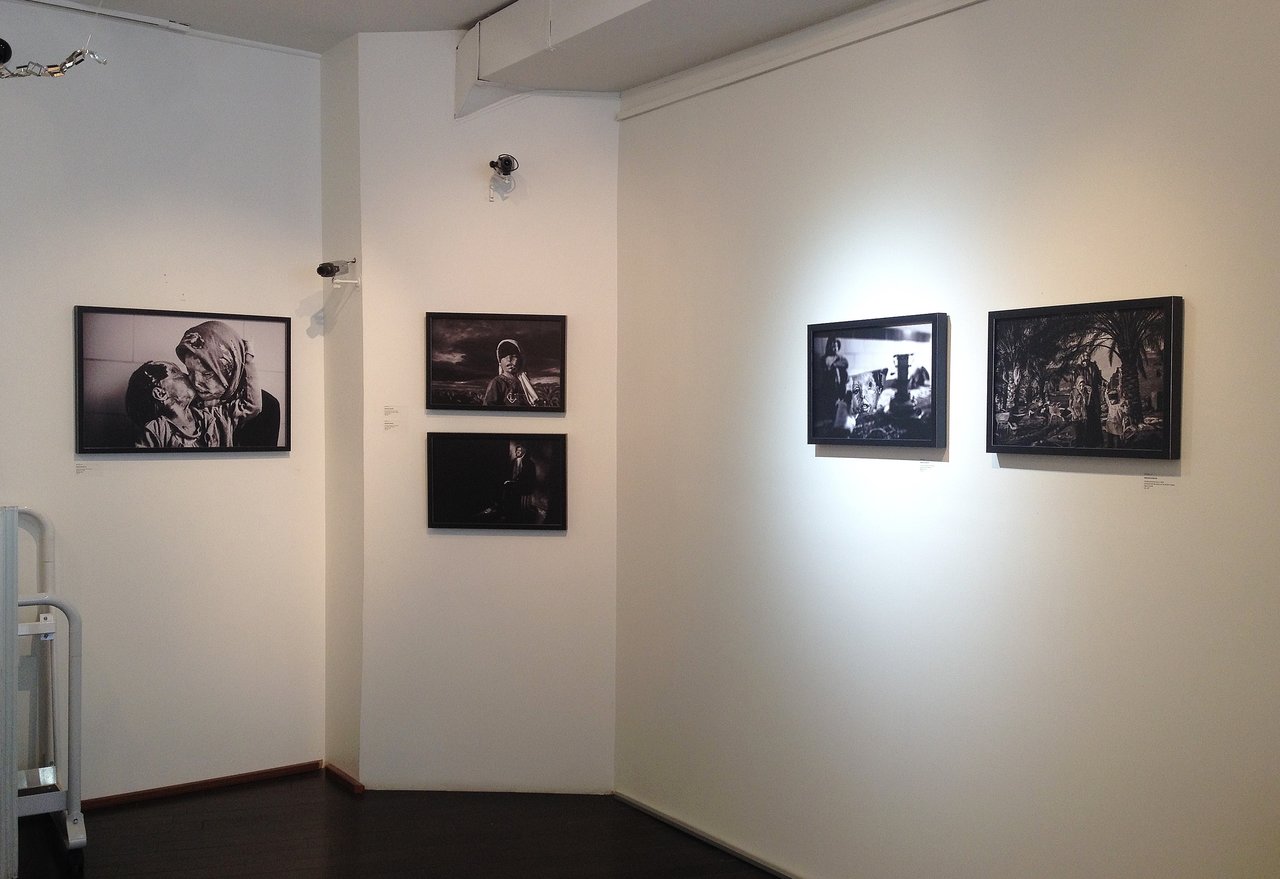Photo Essays of World Press Prize-Winning Photographer Ebrahim Noroozi
On a morning that suggested the beginning of spring, after a long Canadian winter, I entered the Nikola Rukaj Gallery knowing that I would not be leaving with the same pep in my step as I did when I arrived. As expected, having read about Noroozi’s photographs before visiting the show, it is impossible not to be moved by his subjects and their lives. Each image has a strong, captivating expression. The four series that lined the walls were powerful in ways that I have never experienced through photography before. Exploring the effects of war, the traditions of mourning, and the heart wrenching and monstrous aftermath of young Iranian woman’s divorce, Noroozi does not portray the world through rose colored glasses. Instead, he opens the eyes of his viewers to the pain and injustices of those living across the globe.
 Ebrahim Noroozi, War Is Not Over IV-Hassan, 2013. Pigment print, 20 x 30 inches
Ebrahim Noroozi, War Is Not Over IV-Hassan, 2013. Pigment print, 20 x 30 inches
Upon entry, the first two series were War is Not Over which presented men, some proud, others solemn, after losing their limbs and, what I initially thought was a sea of red smoke, Hydrotherapy, where veterans were communally undergoing rehabilitation. The full-frontal portraits of wounded soldiers attest both the lonesome and the collective pain felt after the war.
 Ebrahim Noroozi, Mourners I and II, 2013. Pigment print, 16 x 20 inches each
Ebrahim Noroozi, Mourners I and II, 2013. Pigment print, 16 x 20 inches each
 Ebrahim Noroozi, Mournful Women XI, 2013. Pigment print, 20 x 30 inches
Ebrahim Noroozi, Mournful Women XI, 2013. Pigment print, 20 x 30 inches
Two series dealt with the subject of mourning in two different perspectives. Mournful Women set in front of colorful printed backdrops while Mourners features men grieving by clothing themselves in mud and ashes. Though they differ in their approach to mourning, both are penetratingly powerful. Though the women are posed, in what looks like an interior space, we still get the feeling that we are involved in an intimate and impromptu interaction that makes us empathize with them. Their clothing, and gaze demonstrate their personalities. On the other hand, the men are outdoors and are captured candidly surrounded by flames, producing a visceral intensity. The silent, static portraits of women are starkly contrasted by the dynamic and active scenes of the men.
 Ebrahim Noroozi, Victims of Forced Love VIII-Rana Looks In The Mirror, 2013. Pigment print, 16 x 20 inches
Ebrahim Noroozi, Victims of Forced Love VIII-Rana Looks In The Mirror, 2013. Pigment print, 16 x 20 inches
 Ebrahim Noroozi, Victims of Forced Love IV-Mother and Child, 2013. Pigment print, 20 x 30 inches
Ebrahim Noroozi, Victims of Forced Love IV-Mother and Child, 2013. Pigment print, 20 x 30 inches
Lastly, and by far, the most outstanding collection of images was the narrative of Somayeh and daughter Rana. The monstrous incident occurred after Somayeh persistently asked her husband, Amir Mehri, for a divorce, after having been physically abused. As retaliation, Mehri poured acid on his wife and daughter as they slept leaving them permanently disfigured. Noroozi’s Victims of Forced Love series narrates the aftermath and agonizing effects of this atrocious attack on the mother and daughter duo. Though horrifying, there is an underlying beauty in each series, a humanity that Noroozi accesses with style, compassion, and grace. It is an emotionally taxing show with a strong photographic body of work that you won’t be able to forget.
Text and photo: Leanne Simaan
*Exhibition details: May 10- June 3, 2014, Nikola Rukaj Gallery, 384 Eglinton Avenue West, Toronto. Gallery hours: Mon–Sat, 10–6; Sun, 12–6pm.

